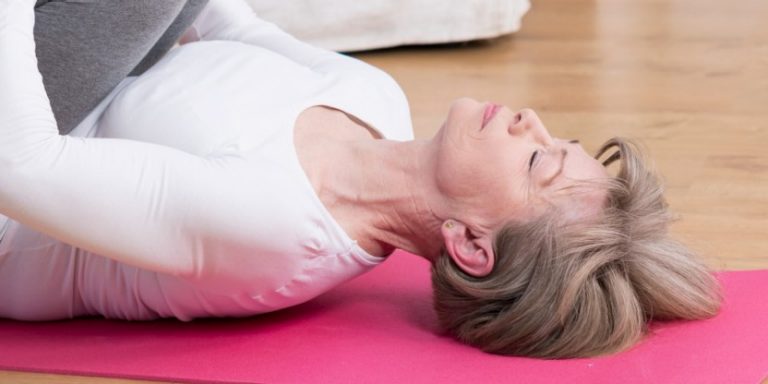
Pelvic floor exercises for incontinence
Suffering from a weak bladder or incontinence reduces quality of life and has an adverse effect on self-confidence. These six simple exercises will strengthen your pelvic floor muscles and improve bladder function.
What can I do about bladder weakness?
The best way to prevent or reduce the frequency of urine leakage is to strengthen the pelvic floor muscles by doing the exercises described below. These exercises are more effective if you suffer from stress incontinence. Other types of bladder weakness require other kinds of treatment. That, though, is something you should first discuss with your doctor. With effective treatment you can soon regain your confidence.
How do I exercise the right muscles?
Before you start exercising your pelvic floor muscles, it is important to identify the right muscle area. This is how:
- Draw your sphincter muscles together, as if you were trying to stop the flow of urine.
- If you have drawn the correct muscles together, you will feel a slight "lifting" of the muscles inwards and upwards.
- It is important to check! Sit on a chair, place your fingertips under your buttocks – so you can feel both seat bones – and engage your pelvic floor muscles until you can feel the change under your fingertips.
- Sit on your flat hands, and draw the pelvic floor inwards and upwards, checking whether you can feel less weight on your hands.
Six daily exercises
First choose the positions in which you can best tighten your pelvic floor. Over time, the other positions will follow.
The practical thing about pelvic floor exercises is that they can be easily integrated into everyday life: while you're on the phone, on the train, in the office, watching TV, etc. They can be done without attracting any attention. Each exercise is based on assuming the correct physical position – stand with feet hip-width apart, spine straight and extended, shoulders loose and relaxed over the chest, and eyes looking straight ahead.
Exercise 1
Assume the correct physical position, and place one hand on your pubic bone and one on your coccyx. «Close» your body openings (urethra, vagina in women, anus), drawing the pelvic floor muscles inwards and upwards. Use your hands to check that your bottom muscles are not tensed.
Exercise 2
Lie on your side with one leg bent. Engage your pelvic floor muscles by visualising yourself «closing» your body openings, drawing the muscles inwards and upwards.
Exercise 3
Kneel on the floor with your knees hip-width apart, and resting your forehead on your hands. Draw your pelvic floor muscles inwards and upwards while breathing out, then release the muscles while breathing in.
Exercise 4
With small steps, tap, tap, tap your way up the wall, allowing your breath to flow, and only go so far up that you feel no pressure on the cervical spine. Remain in that position, continue breathing, and come down again slowly.
Exercise 5
Lie on your back with your knees bent and hip-width apart. Engage your pelvic floor muscles, using your hands on your lower abdomen to check whether you are tightening your deep abdominal muscles. If you can feel them tightening, you are doing the exercise correctly.
Exercise 6
Your legs should be slightly bent and apart. Lean your elbows on your thighs, keeping your back straight. Engage your pelvic floor and draw the muscles inwards and upwards.
General tips
- If you have to lift something heavy, always tighten your pelvic floor muscles and keep your back and neck lengthened. Breathe out as you lift, and use your legs to straighten yourself up.
- It is worthwhile looking after and exercising your muscles throughout your life. So whenever you have to bend down to lift something up, make sure you take care of your pelvic floor and your back.
- Build these exercises into your daily life and your leisure time. Practice – and keep practising – and be patient. Don't get discouraged if the desired effect doesn't kick in when you've only recently started on the exercises. To achieve your goal, you need to practice them regularly and correctly.
- Ask your doctor or a pelvic floor specialist for advice. If you see no improvement after two to three months of regular pelvic floor exercises, it would be a good idea to visit your doctor to check that you are doing them correctly.
Photos and text: BeBo ® Gesundheitstraining, www.beckenboden.com
Further information


Newsletter
Find out more about current health issues every month and get all the information you need about our attractive offers from all Helsana Group companies * delivered by e-mail to read whenever it suits you. Our newsletter is free of charge and you can sign up here:
We did not receive your information. Please try again later.
* The Helsana Group comprises Helsana Insurance Company Ltd, Helsana Supplementary Insurances Ltd and Helsana Accidents Ltd.